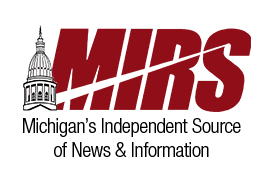(Source: MIRS.news, Published 08/21/2024) (LOUISVILLE, KY )-- While declining revenues, a slowing economy, demographic changes and structural deficits may be among the top fiscal issues for states, earlier this month Michael D’Arcy of Fitch Ratings offered a National Conference of State Legislatures' (NCSL) session that also included some reality checks.
The panel was based on a survey of state fiscal offices across the country to determine the top fiscal issues in the states. D’Arcy said a majority of fiscal directors of states find all of these issues to be concerning, but he addressed ways that some may not be as bad as envisioned.
He said declining revenues being the top concern does have some data backing it, as revenues declined for 16 states in the last fiscal year, and the median year-over-year growth for states was 0.5 percent, a deceleration from one year ago, "and definitely from two and three years ago from the revenue surge."
Still, he said the declining revenue "is a largely engineered phenomenon, given that 44 states have cut taxes in the last three years, and the total amount of tax cuts is over $80 billion. We thought this year was going to be kind of a fallow year with about $5 or $6 billion worth of total tax reduction actions by the time the supplemental budget sessions were over. It was over $10 billion, equal to 2021. That is driving a lot of the revenue decline."
On economic uncertainty, he also said there is some substantiation for the concerns, with slower hiring and a cooling labor market. He cited Sahm Rule Recession Indicator, which can signal the start of a recession if the unemployment rate increases by more than 0.5 percent over a 12-month period.
"That has been the best predictor for a U.S. recession since 1952," D'Arcy said. However, he said Fitch Ratings believes this time may be the exception.
"There has been a large increase in labor supply, and the new supply coming into the market is less skilled labor, and businesses have had the greatest drop in demand for less skilled labor," he said. “Understand that about 3 million new people entered the country in 2023 alone. That's where the surge of labor supply is coming from, and it's only been choked off in the last six months, largely with executive action. Most of the increase in the unemployment rate is coming from young, unskilled people who are new entrants to the economy, and in fact, new entrants to the United States.”
Speaking on concerns about demographic changes, he called it an "interesting" concern.
"It sort of depends on which state you are and where you're located. If you're in Idaho or Utah, the demographic changes are really positive because a lot of people are coming to those states, and people have very high birth rates in those states . . . so they can grow their way out of most tax cuts they do," he said. "If you are Ohio, Michigan or Maine, then demographically, the picture is different, and it's going to be harder to keep up revenue momentum or grow out of recurring tax cuts."
The event was moderated by Jonathan Ball, a legislative fiscal analyst for the Utah Legislature, and included D'Arcy; Michelle Exstrom, Eric Syverson and Heather Wilson, all from NCSL; and Fatima Yousofi of the Pew Charitable Trusts. In addition to the overall fiscal health of states, the panel also addressed education, housing and pension concerns for state budgets.
On structural deficits and state credit ratings, he said that Fitch does not see any concerns, even though revenues were down in 16 states. Many were still above forecasts, so while states such as West Virginia had a revenue drop of 15 percent year over year, it still beat its revenue forecast by over 10 percent.
He said Fitch currently has five states on a positive outlook for state credit ratings, but there are none on a negative outlook.
"I think state credit ratings at this point are in no immediate danger of going down," he said.
NCSL's Eric Syvefson addressed state tax policies that were enacted over the last year, including housing, income tax cuts, reducing costs of capital investments, tax policy for family and children (especially the cost of child care), and sales tax exemptions.
A new category of policies addresses students’ experiencing homelessness, with states like Washington putting resources into those students and tracking their progress to better identify students who need the resources and how to get them.
Yousofi spoke on structural deficit concerns and long-term liabilities to budgets, including unfunded retirement obligations and infrastructure maintenance. She said these long-term liabilities could strain state budgets if not handled correctly.
Wilson addressed the housing crisis. She said since 2019, NCSL has tracked 1,913 bills related to housing affordability and availability. So far this year, 336 have been passed. Policy areas include improving rent stability, easing zoning regulations and restrictions, increasing building and development, and increasing homeownership.

